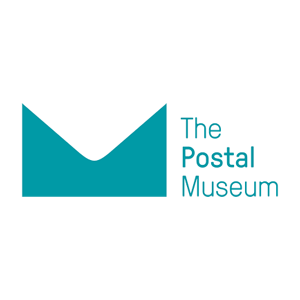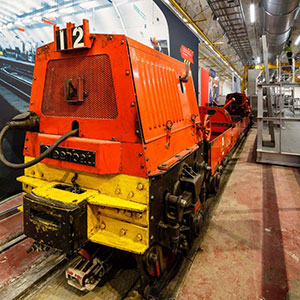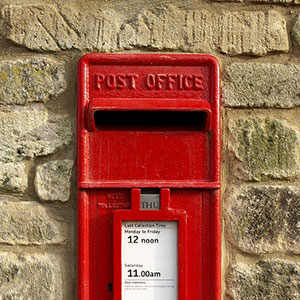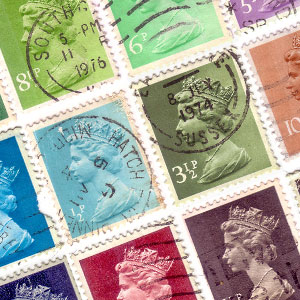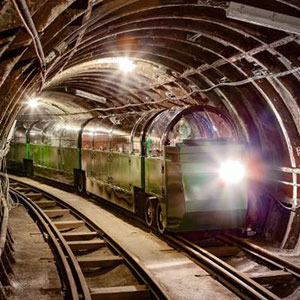The BPMA is the leading national resource for all aspects of British Postal heritage. It cares for the visual, physical and written records of over 400 years of innovation and service illuminating the fascinating story of British postal communications. The BPMA is custodian of two significant collections which include everything from art and design work to postal vehicles, from uniforms to toys.
Mail Rail is the original underground railway which historically delivered mail across London right up until 2004. Opening this part of “secret London” to the public for the very first time will be a big attraction both in terms of visitor numbers and breadth of appeal but also in terms of commercial/income potential. The ride element will be the strongest draw and will attract a wide audience of tourists, families and Londoners wanting to see a slice of history.
Britton McGrath Associates worked with the BPMA on an initial commercial review which explored the optimum mix of initiatives that will maximise the potential of the two sites; ensure that they have the ability to become financially sustainable; and to plan the optimum solution by which a sustainable future could be realised.
We then developed the Business Plan which resulted in a successful application to the HLF for £4.5m of funding to support the development; and are currently working with them on developing the optimum operational solution which balances the needs of a large museum collection, a timed ride experience and a timed, ticketed family zone.
The Full Story
The BPMA is the leading national resource for all aspects of British Postal heritage. The Museum collection was formerly displayed in the National Postal Museum near St Paul’s Cathedral in London, but the Museum closed in 1998. The collection was gifted to BPMA by Royal Mail when the trust was established in 2004 and the collection had been without a permanent sustainable and accessible home until this project came along.
The British Postal Museum & Archive’s mission was to make the collections and the stories they tell available and enjoyable for all.
The ambition was to build a new state-of-the-art centre and visitor attraction in central London which would ensure the preservation and public access to the collections. This new British Postal Museum & Archive was planned for Calthorpe House, adjacent to Mount Pleasant, Royal Mail’s home in London for the past 122 years. It was intended to bring together the BPMA’s collection of objects spanning 400 years of postal history, the majority of which had never been seen by the public, and the Royal Mail archive.
The objective of our study was initially to consider the overall commercial viability of the Mail Rail project. However, we considered two propositions, Calthorpe House as a stand-alone Museum/Exhibition site and Calthorpe House combined with Mail Rail, an extended Museum and ride experience under Mount Pleasant. Our report and P&L analysis formed the basis of the BPMA’s business planning work and its successful application to the Heritage Lottery Fund to support this development.
During the course of this study, we had to deal with significantly shifting sands, for example, the size of the exhibition space available at Calthorpe House was reduced dramatically, making the BPMA one of the smallest museums in London.
In contrast, we were able to demonstrate that the inclusion of Mail Rail improved the financial viability of the Museum enabling us to forecast operations at a profit and for the BPMA to build up a small amount of reserves for further investment in the exhibition in future years.
Our research, and experience in the visitor attraction market, led us to conclude that the Mail Rail ride and larger museum had the potential to capture the public’s imagination. As a result, we were able to model the potential visitor numbers and profits achievable if this were to occur.
In order to reach our conclusions, we completed an evidence-based analysis of visitor demand, target market and anticipated visitor numbers, primarily based on benchmarking research and used this information to develop a financial model for the business with projections that covered early and mature years.
We identified that the project would not be without its challenges. In a location that is weak as a visitor destination, attracting the anticipated visitor numbers was recognised as a challenge and as a result our recommendations identified that it was essential that an investment be made in marketing, at least in line with other comparable visitor attractions to drive visitors to this location.
Our recommendations were that the visitor experience should go beyond that of a traditional Museum in order to deliver a strong visitor experience – off the back of which good word of mouth and repeat visitors could be generated.
In contrast to its weak location as a visitor destination, the site was identified as being a potentially strong location for corporate and functions business. This led us to recommend that, in order to unlock this potential, the spaces needed to be designed to optimise use for both day visitors and evening functions and that there was a need for investment in the management skills and materials to engage with this market.
Following our initial Commercial Review Britton McGrath Associates commissioned a comprehensive, quantitative market research evaluation to provide statistically validated data on likely visitor numbers. This provided data at the 95% level of confidence for forecasted visitor numbers.
This study also included an evaluation of the opportunity to include a Family Zone as part of the overall visitor proposition for the experience. This was proposed in order to broaden the delivery to, and perception of appeal for, families with children; to underpin visitor numbers, particularly from families with children under the age of 8, or those with a mix of younger and older children; to generate additional income to the P&L supporting project viability, and; to help generate schools visits from key stage I, but also underpin visits from the younger end of key stage II.
Our work pulled together all the threads on the Family Zone from our previous work, along with the assumptions made based on the market review, and the latest understanding on likely space and operational costs so that we were able to make recommendations on the role that this Zone could play within the Mail Rail concept.
Our study provided an overwhelming steer towards the significance and importance of the Family Zone to the overall proposition and it became clear that the Family Zone had the potential to significantly support the overall commercial proposition for both Calthorpe Museum and Mail Rail or, in its absence, consign the Museum to a very much more modest, niche scale of success.
Britton McGrath Associates worked with BPMA from 2012 through to 2016 and during that time supported the team in the areas of visitor experience development/optimisation, HLF Business Planning, operational modelling, pricing, timed ticketing and associated commercial opportunities.

